
In this classic UKC training/health article, physiotherapist Gabriella Frittelli takes us through some shoulder exercises that can help prevent shoulder injuries and the well known and feared Shoulder Impingement Syndrome.
Gabriella teaches us how to strengthen our 'Rotator Cuff' muscles, with a series of exercises using a theraband.
The article was originally published back in 2005 but has been revamped and reformatted for 2011.
So you hit the climbing wall hard all winter and now you're off to tick some real rock at Portland or Stanage. Better pack one piece of personal protective equipment besides your cams or quickdraws – stable shoulders.
"What?" you say, "I'm strong – I've been cranking 6a's on the wall!"
Strong shoulders, however, are not necessarily stable shoulders and if you are pulling down often, you could be a prime candidate for Shoulder Impingement Syndrome (SIS). Climbers are particularly susceptible to SIS because they are always reaching overhead – higher, higher, higher for that next hold.
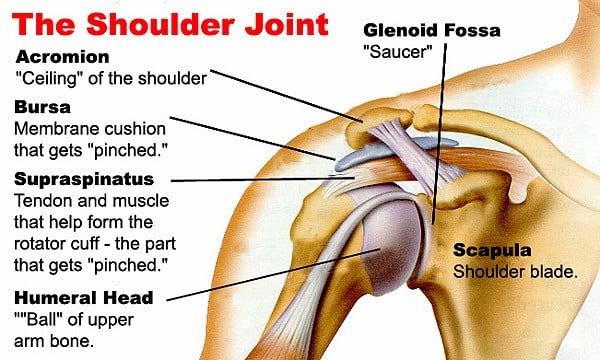

The good news is you can avoid SIS. The secret is preventative exercise. You may have honed the prime movers of the shoulder – your lats, deltoids, traps, triceps, biceps and pects in prime time at the wall. But you likely ignored strengthening a group of four muscles called the rotator cuff. The rotator cuff muscles are the core stabilizers of the shoulder.
While the shoulder is likely the most mobile joint of the body – it's also one of the most vulnerable to injury. You can blame the architecture of the shoulder joint. The shoulder is a "ball and socket" type joint like the hip. Unlike the hip, however, the socket is not deep. In fact, the "socket" of the shoulder joint is similar in shape to a saucer. The end of the humerus (your arm bone) is shaped like a ball and sits in this saucer. The ball of the humerus, called the "humeral head", is almost four times the size of the saucer. While the structure of the joint allows considerable mobility of the shoulder, it does not offer stability. The stability of the shoulder joint relies on the strength of the rotator cuff. The job of these four tiny muscles is to "hug" the humeral head and keep it centred in the socket.
Think of the rotator cuff as the guide wires of a tent. If one is too slack or too tight, the tent won't sit erect. Each muscle of the rotator cuff works to keep the shoulder bone (the humeral head) centred in the joint socket. If your rotator cuff is weak, when you reach overhead the humeral head will ride "high' in the socket and butt up against another bone- the "ceiling" of the shoulder joint called the acromion. Repetitively reaching overhead on the rock will eventually lead to pinching, shearing of the tendons of the shoulder. Ouch! Pinching, shearing of the tendons leads to inflammation also known as tendonitis. You likely have developed "Shoulder Impingement Syndrome".
The good news is you can prevent chronic shoulder tendonitis by regularly investing a few minutes in a rotator cuff strengthening program. All you need is a towel and a length of resistive band or theraband. Below are some exercises that may prevent shoulder injuries. Lisa Rands, one of the USA's top boulderers and headpointers follows a similar set of exercises. She stresses that it is important to do these exercises right. Always maintain good posture when performing the exercises – back straight, upright shoulder girdle – no slumping!
If you can manage to these exercises three times a week you will be on your way to healthy shoulders but you will benefit even more if you do them everyday.
Please note: This article is not intended as a treatment guideline for shoulder injuries. The exercises illustrated may be more effective under the instruction of a physiotherapist or athletic trainer.
If you have pain in your shoulders, seek the medical advice of your doctor. Shoulder pain can have a variety of causes. Sometimes it is caused by referred pain from the neck. You may have a stiff and painful shoulder caused by osteoarthritis or an adhesive capsule. Your doctor will be able to determine the cause of your pain and will select the appropriate treatment plan. You may be referred for physiotherapy intervention. Physiotherapy treatments may include joint mobilization, posture and exercise training to ensure optimal joint mechanics, and anti-inflammatory modalities such as ultrasound, electrical stimulation and ice. Consultation with a physio and/or occupational therapist may keep you climbing high all season.


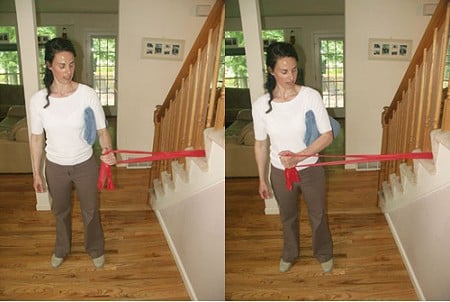

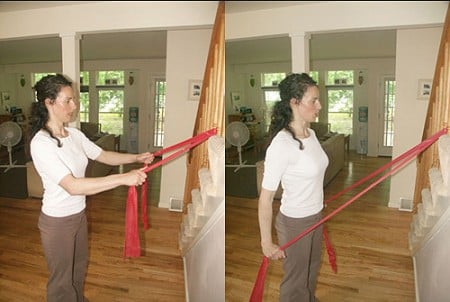
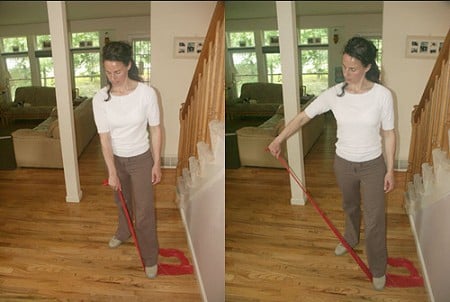



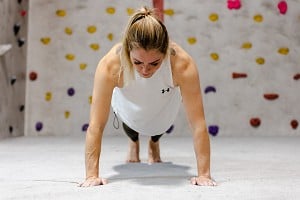
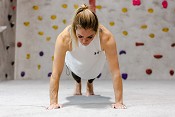








Comments